Fujifilm X-H1 Review
Fujifilm X-H1
The X-H1 is a fine alternative to many of today's bulkier professional DSLRs
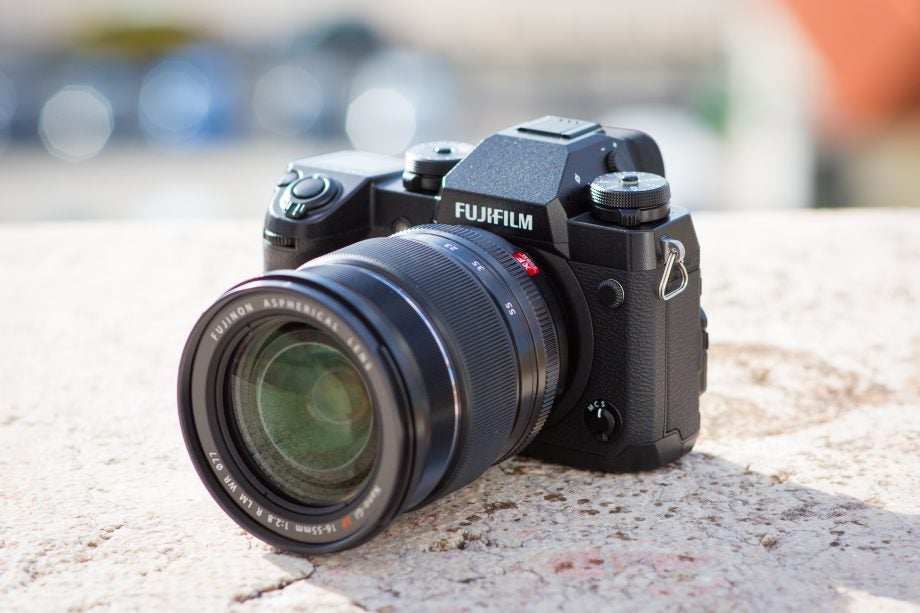
Verdict
Pros
- Benefits from In Body Image Stabilisation (IBIS)
- Introduces Flicker Reduction mode
- Supports excellent power booster grip (VPB-XH1)
- Improved electronic viewfinder (OVF/EVF)
Cons
- Camera battery can’t be charged via booster
- Small AF-ON AE-L buttons on VPB-XH1
- Doesn’t feature 4:2:2 10-bit video
- No USB-Type C interface
Key Specifications
- Review Price: £1699 (body only) £1949 (battery grip kit)
- 24.3-million-pixel X-Trans CMOS III sensor
- ISO 200-12,800 (expandable to ISO 100-51,200)
- In body image stabilisation (IBIS)
- Continuous shooting up to 14fps with VPB-X-H1 battery grip
- 4K/30p 4:2:0 8-bit internal recording (200Mbps, 100Mbps, 50Mbps)
- 4K/30p 4:2:2 8-bit HDMI external recording
- 3.69-million-dot EVF with 0.75x magnification
- 3in, 1.04m-dot tilt screen
- Dual SD card slots (both UHS-II compatible)
- Eterna film simulation mode for movies
- Flicker reduction mode
- Optional VPB-XH1 battery grip
- NP-W126S Li-ion battery (310 shots in normal mode)
- Bluetooth and Wi-fi connectivity
- 139.8x97.3x85.5mm (WxHxD)
- 673g (body only, including battery and memory card)
What is the Fujifilm X-H1?
For months there’s been talk of a new high-end mirrorless camera arriving from Fujifilm. Speculative chat seemed to suggest that the next model might be called the X-T2S – a pimped-up version of the X-T2, possibly with a few exciting features to entice existing X-series users and those tempted to finally make the switch from DSLR to mirrorless.
When the model name for Fujifilm’s next mirrorless camera was revealed as the X-H1, it quickly became apparent that Fujifilm hadn’t been working on a replacement or successor to the X-T2 after all. Instead, it had been focusing on creating a new camera to sit above the X-T2 as the pièce de résistance in the X series.
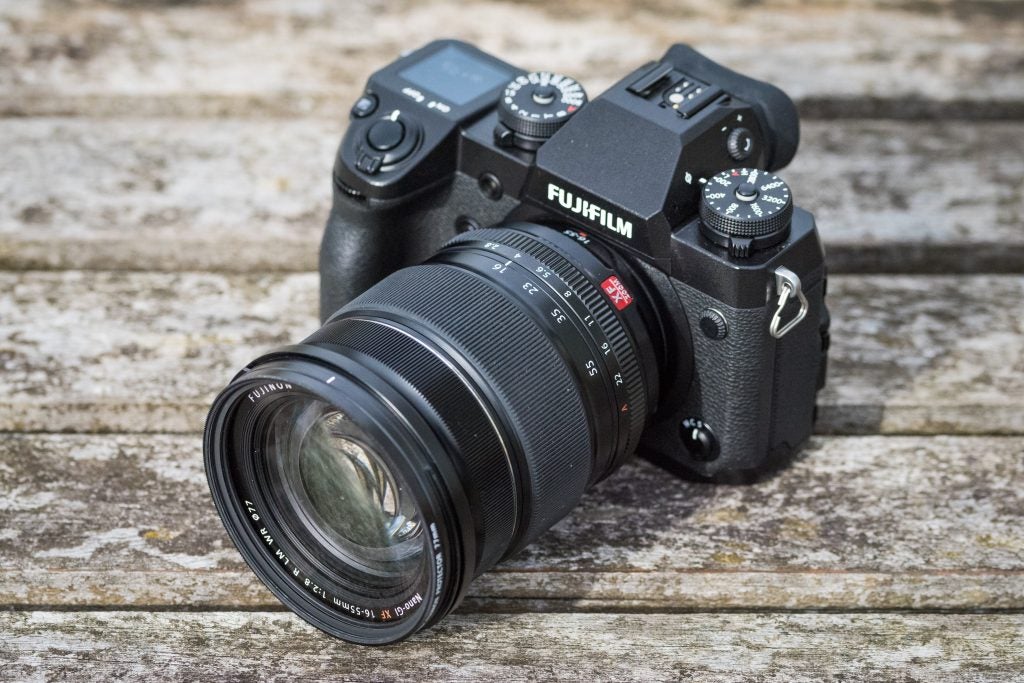
Compared to their mirrorless rivals, Fujifilm’s high-end models have always lacked in-body image stabilisation (IBIS). It’s taken a while, but I’m glad to report that IBIS has finally made its way into X-H1.
Fujifilm sees the X-H1 as the go-to camera for photographers who insist on owning a true workhorse with an impressive stills and video specification. So are we looking at another success, or is the X-H1 actually a little underwhelming?
Related: Best cameras
Fujifilm X-H1 – Features
Fujifilm has relied on its 24.3-megapixel X-Trans CMOS III sensor and X-Processor Pro for quite a few years now and we’ve seen this winning combination filter down to X-series models lower in the range, including the X-T20 and X-E3. This reliable pairing of sensor and processor is once again used in the X-H1, and like the X-T2, it provides a sensitivity range that spans from ISO 200-12,800 (expandable to ISO 100-51,200).
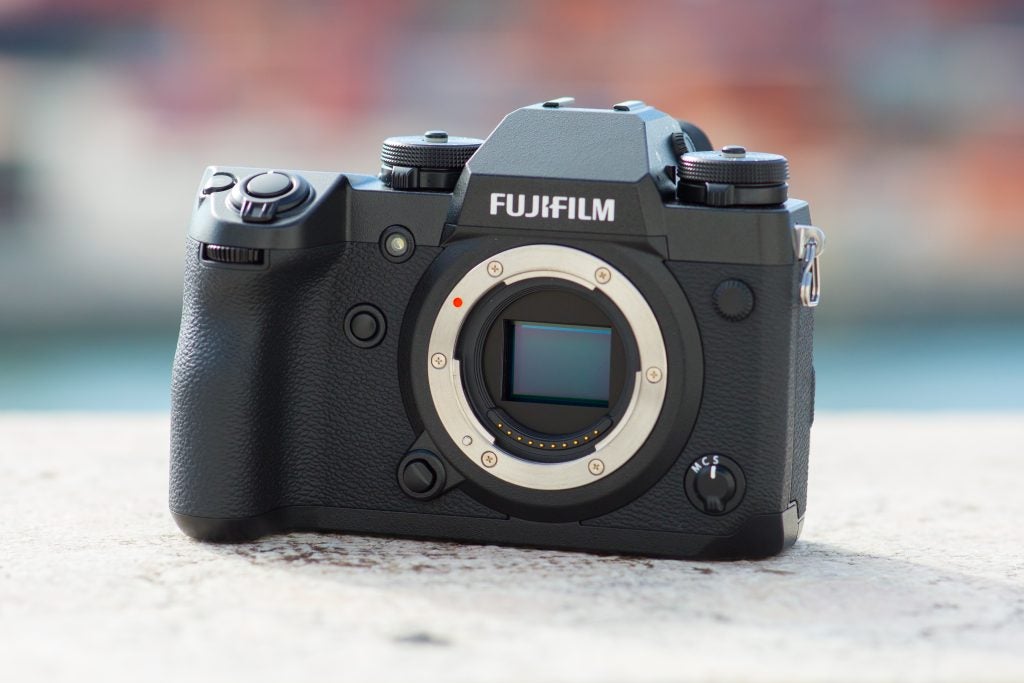
It’s no great surprise then that the X-H1 shoots no faster when it’s set to continuous high shooting mode. A top-end speed of 8fps can be achieved straight out of the box, and higher speeds can be achieved by attaching the new VPB-XH1 battery grip, or Vertical Power Booster as it’s also known.
With the camera and grip set to performance-enhancing boost mode, continuous shooting speed rises to 11fps using the mechanical shutter and a hasty 14fps when the X-H1’s electronic shutter is deployed.
One upgrade to burst shooting is the introduction of a continuous medium (CM) mode on the drive dial. This allows users to shoot between continuous low (CL) and continuous high (CH) at 6fps – the same speed at which users can shoot continuously in Live view and is 1fps up on the X-T2.
Related: Best mirrorless cameras
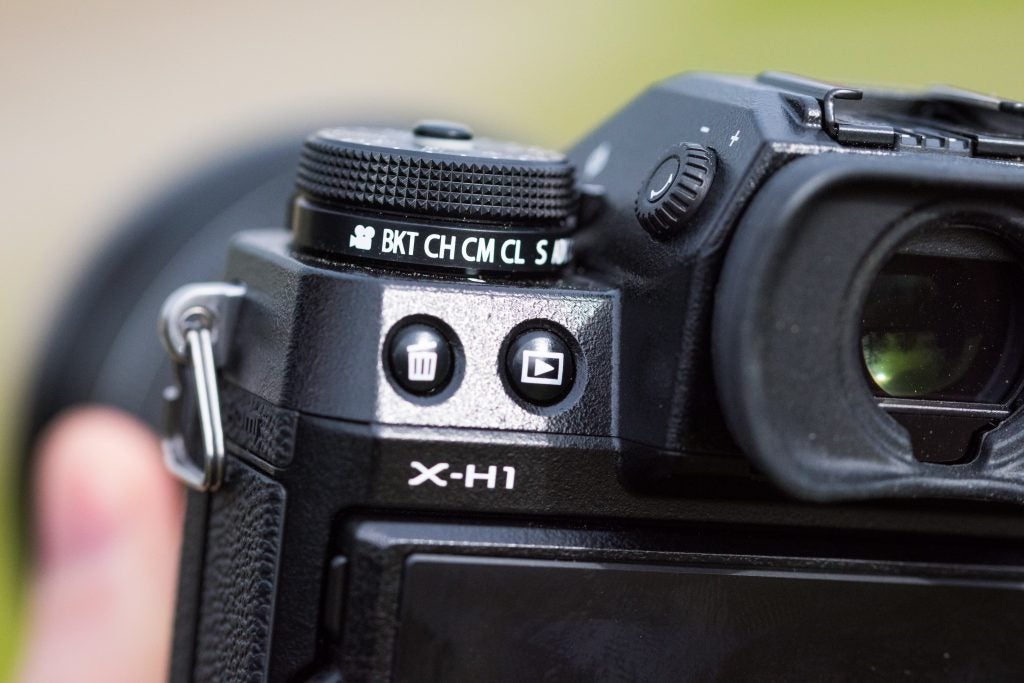
The shutter lag and startup time are rated at 0.045sec and 0.4sec respectively, with the latter being fractionally slower than the X-T2 (0.3sec). Like other X-series models, there’s a mechanical focal plane shutter with a 1/8000sec limit and the option to extend the fastest speed to 1/32,000sec by using the silent electronic shutter.
The difference between the X-H1’s shutter unit and that of the X-T2 is that the former is equipped with shock-absorption suspension to reduce shock generated by the operation of the mechanical shutter. This has also had the effect of reducing the noise of the shutter, making it a perceivably quieter camera to shoot with than the X-T2.
Turning to the back of the camera you’ll notice it has the same superb 3in, 1.04m-dot three-way tilt screen as the X-T2, with the added benefit of being Fujifilm’s first top-end model to feature touchscreen control. The screen is a class-leading 3.69-million-dot EVF with 0.75x magnification. This is said to be 1.6x brighter than previous models and has an eye sensor that’s more responsive.
Related: Best camera bags
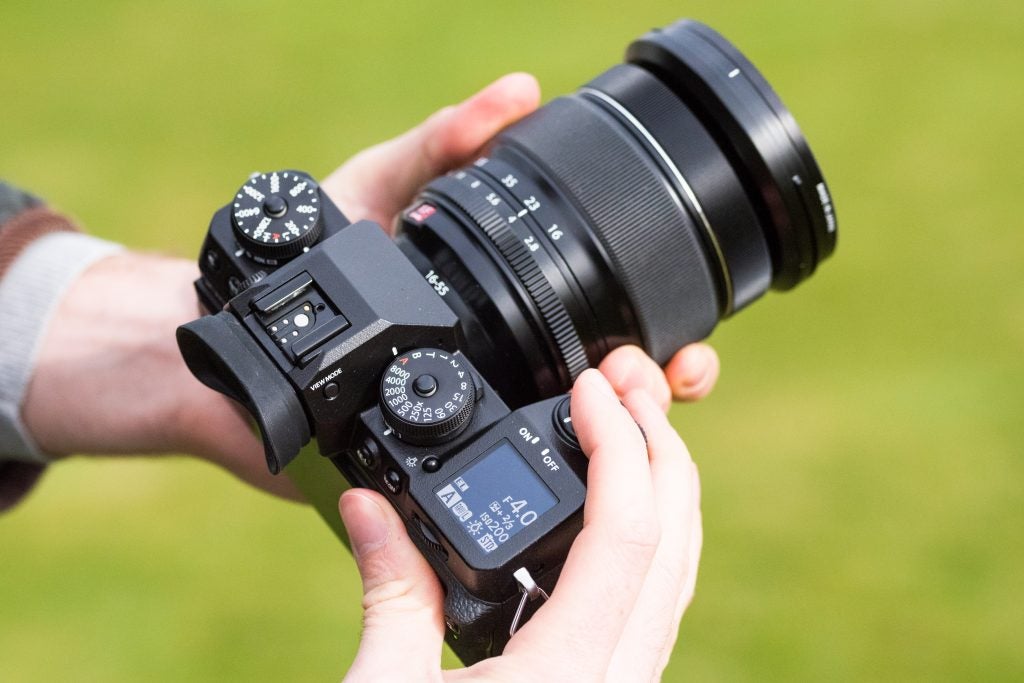
Furthermore, the EVF refresh rate can be raised from 60fps to 100fps for the finest viewing experience. Another benefit of using the camera with the vertical power booster is that it reduces the EVF blackout time from 130msecs to 114msecs.
So far so good, but what about autofocus? The hybrid autofocus system might seem identical to the X-T2, but it’s received a few tweaks.
There’s a central, square phase-detection region covering half of the frame width and three-quarters of its height. Contrast detection points are employed outside this area. Users are given the choice of either a 91-point arrangement, which splits the frame into a 7 x 13 grid, or there’s a 325-point layout consisting of a 13 x 13 central grid of phase-detection points with a 6 x 13 grid of contrast-detect points either side.
As before you get single-point, zone and wide/tracking AF modes, and there are five autofocus case modes with three user-adjustable parameters. These determine focusing characteristics to make it easier to accurately track a moving subject in the AF-C mode.
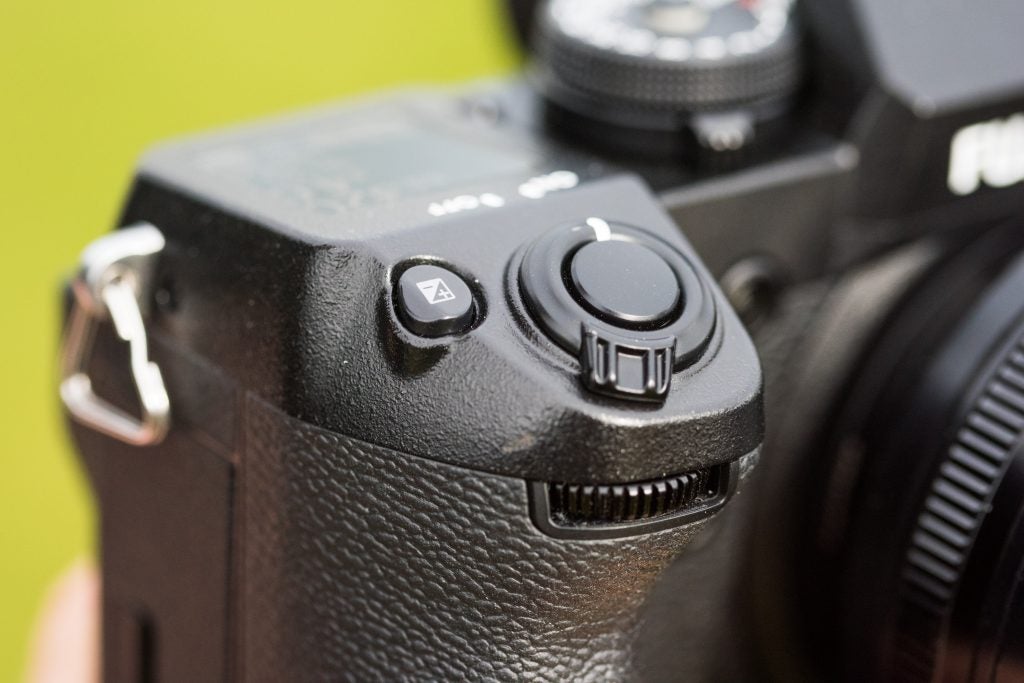
Improvements see the phase detection’s AF range expanded by 1.5 stops from the previous 0.5EV to -1EV, while the minimum aperture requirement is also improved from f/8 to f/11. Fujifilm has also looked at improving AF accuracy and speed by increasing the number of data analysis points. This in turn allows the camera to select the best focus point, even in a small single AF area.
Fujifilm claims the above also enhances continuous focusing whilst zooming, and it supposedly acquires more accurate focus on subjects with extremely fine texture.
The X-H1 isn’t primarily designed for videographers, but it has the capability of shooting fine video footage. It doesn’t shoot broadcast-quality 4:2:2 10-bit colour like Panasonic’s Lumix GH5 or GH5S, but it does offer upgraded video functionality over the X-T2, with 4K/30p 4:2:0 8-bit internal recording at a maximum of 200Mbps (100Mbps and 50Mbps are available). There are also HDMI live output options, which include 4K/30p 4:2:2 8-bit.
Related: Best tripods
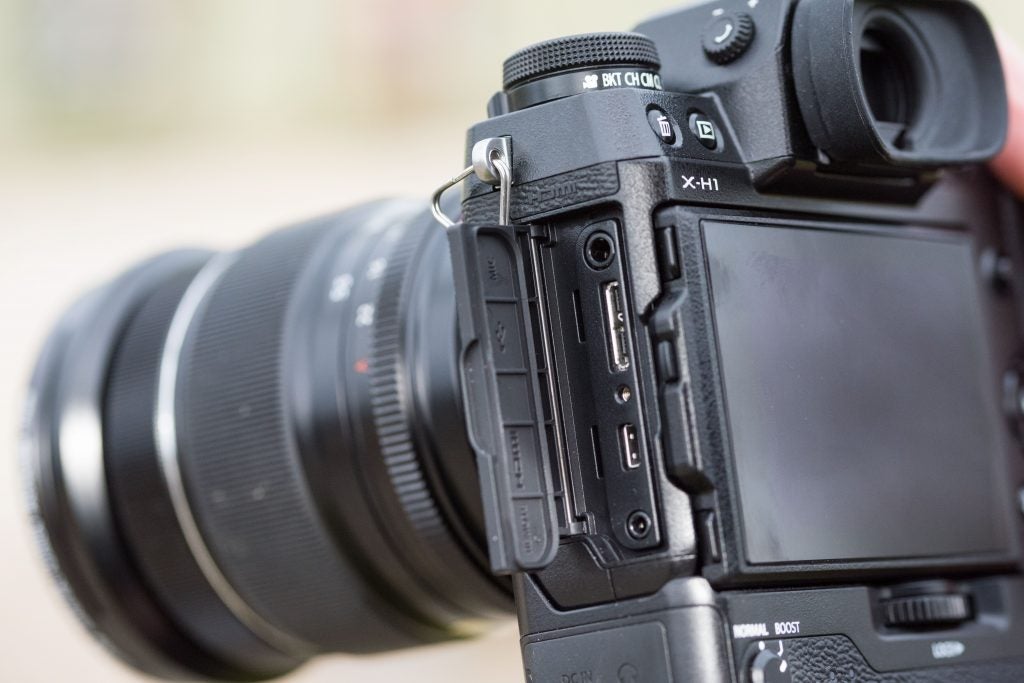
Flat F-log video recording to the card is available in 4K and Full HD video formats for accurate colour grading in post production, and there’s a new-dedicated video menu. Slow-motion recording in Full HD at 120fps is also possible. However, there’s no option to extract still images from movie footage in the way you can on Panasonic models equipped with 4K/6K Photo modes.
All existing film-simulation modes can be used for stills and movies, and there’s a new movie-optimised mode called Eterna that mimics the feel of that particular old Fujifilm film stock. This produces a look with low contrast and low saturation,with soft shadows.
Users get a stereo microphone input behind the side door, below which is a USB 3.0 terminal, HDMI output (Type D) and a 2.5mm remote release port. Any users wishing to plug in headphones to monitor audio will require the optional vertical power booster to do so.
Fujifilm X-H1 – In Body Image Stabilisation (IBIS)
The big point of discussion on the X-H1 is the implementation of a 5-axis In Body Image Stabilisation. It’s the first X-series model to be equipped with a stabilisation unit, which is made up of a three-axis accelerometer, a three-axis gyro, and a dedicated dual processor.
All the above work in tandem together, carrying out processing and stabilisation correction at approximately 10,000 times every second. Those are some impressive calculation speeds right there!
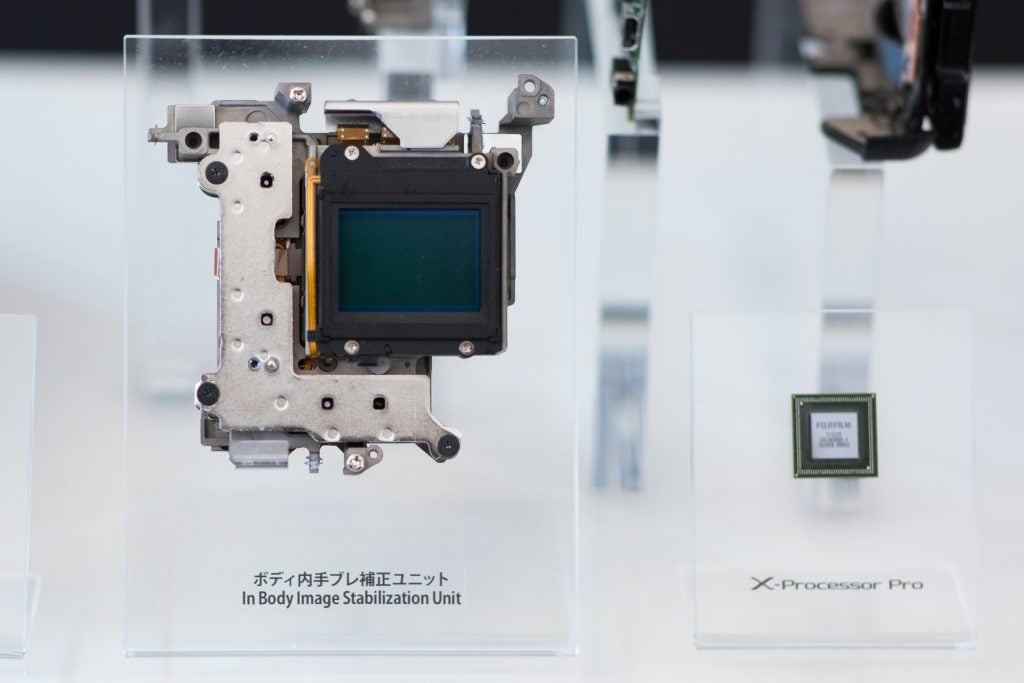
When the X-H1 is paired up with unstabilised lenses such as the XF 35mm f/1.4 R, the IBIS unit is capable of providing a maximum 5.5 stops of compensation. In those instances where the X-H1 is used with Fujifilm lenses that feature optical image stabilisation (OIS), the camera hands pitch and yaw correction over to the lens and corrects the other three axes in-body.
With lenses that correct four axes of movement such as the Fujinon XF 80mm f/2.8 R LM OIS WR, the camera hands pitch and yaw to the lens, with roll being corrected by the camera body.
As you’d expect, the IBIS system works for both stills and movie recording, but anyone who attempts to use adapted lenses with the X-H1 should be aware that they’ll only get 3-axis IBIS due to focus distance being a prerequisite for effective 5-axis in-body stabilisation.
Fujifilm X-H1 – Body and design
When I reviewed the X-T2, I couldn’t think of many ways in which the build quality could be improved. It felt strong, resilient and handled delightfully with its booster grip attached.
To accommodate the IBIS unit, the X-H1 has had to be built around an entirely new metal chassis. Early on in the design process Fujifilm decided to make the X-H1 the most robust X-series model it’s ever made.
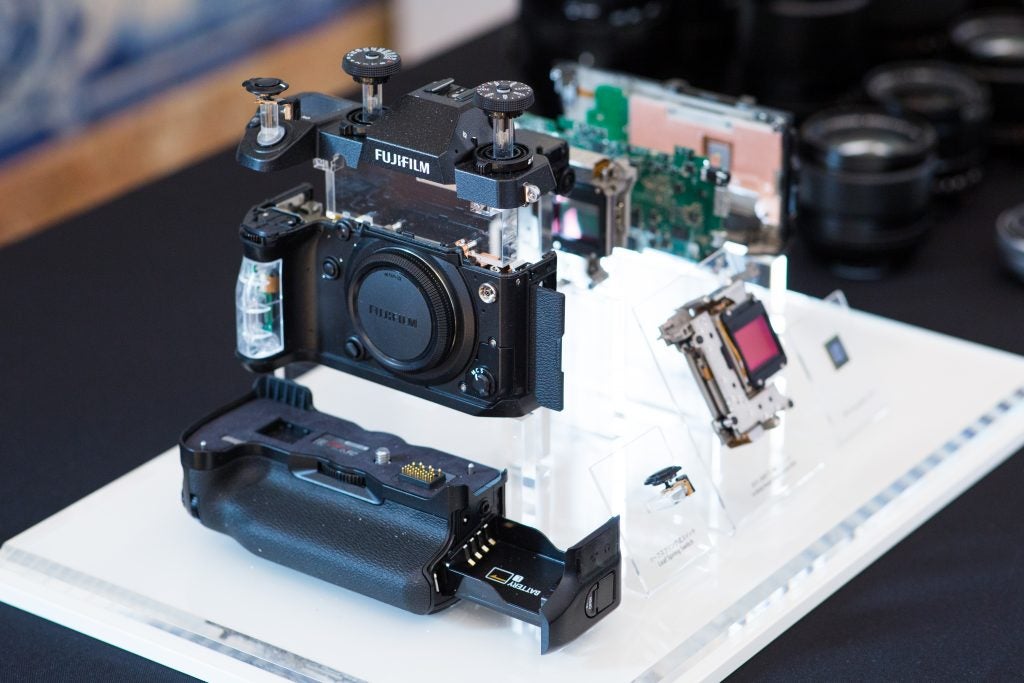
Despite weighing 166g more than the X-T2, it manages to weigh less than half the weight of many pro-spec DSLRs, which is some achievement. To make sure it meets the demanding expectations of professionals, it has a ribbed frame for added internal strength and a 25% thicker magnesium-alloy body.
Weather-sealed at 94 points across the body with a larger heat-sink plate, and finished in scratch-resistant paint, the X-H1 has all the preventive measures in place to ensure it doesn’t get bruised or damaged easily. The same can be said for the vertical booster, which is constructed to a high standard. It does the job of mimicking the feel of the camera in the landscape orientation when it’s used in the portrait format.
The only minor niggles with the booster are that it doesn’t allow you to charge the third battery in the camera via the DC IN 9V power supply, and the AF-ON and AE-L buttons are considerably smaller and less easy to locate than those on the body when the EVF is raised to your eye.
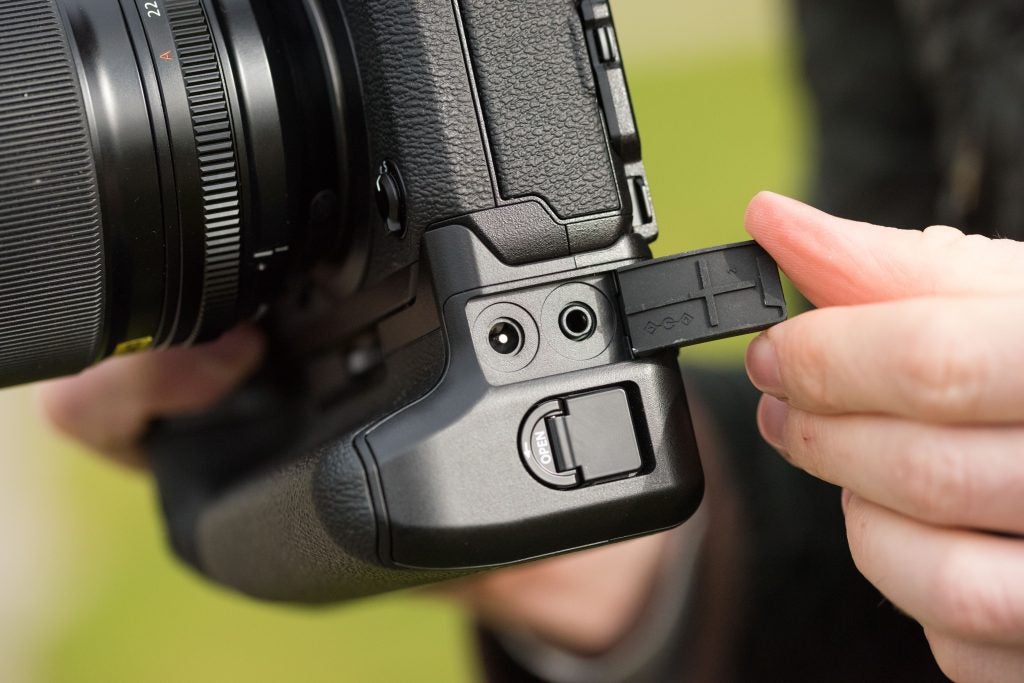
At the same time as designing the new metal chassis, the opportunity was taken to rethink the X-H1’s controls and arrangement of buttons. Gone is the option to flick an exposure compensation dial on the corner with your thumb as on the X-T2. Instead, this space has been reassigned to a sub LCD panel that provides visual reference of key camera settings when glancing down.
Just ahead of it is a leaf-sprung shutter button, with an exposure compensation button offset. The latter is used in combination with the rear dial to make an adjustment, and the shutter button is extremely sensitive to a half press.
The low-consumption sub LCD screen can be inverted to display shooting settings as black on white or vice versa. It shows the battery level, exposure compensation value and remaining card capacity when the camera is switched off.
In shooting mode, the sub LCD can be customised to user preference. As well as having nine customisable function buttons across the body, quick shortcuts can be assigned to the screen. For example, you can swipe up to view the histogram or down to load the electronic level function.
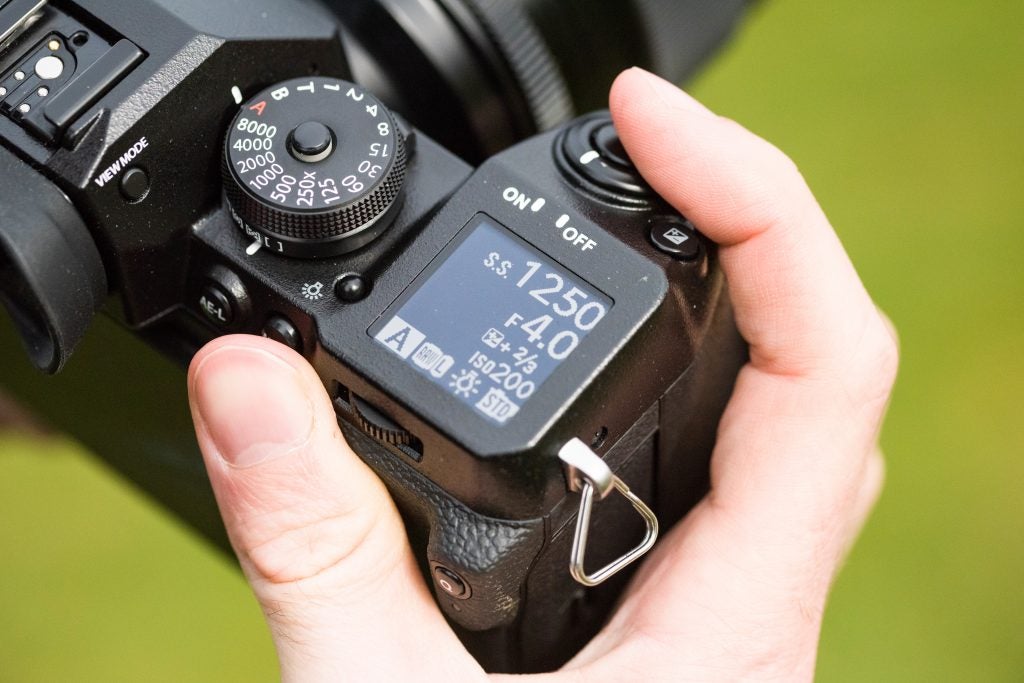
The larger playback/delete and AE-L/AF-ON buttons either side of the electronic viewfinder are well received. There’s also a repositioned quick-menu button just to the right of where the thumb lays to rest at the rear. The fact that it protrudes might imply that it will get knocked from time to time. However, I didn’t find this to be an issue and regularly used it to call up frequently used settings, which were then changed by tapping large icons onscreen.
Although the touchscreen is responsive and can be useful for firing the shutter or positioning the AF point, it continues to lag behind other manufacturer’s touchscreens in the way it doesn’t let you navigate the main menu. This isn’t a catastrophe – the superb AF toggle doubles up as a great way of accessing the setting you’d like to change – but I’d like to see Fujifilm evolve the functionality in this department.
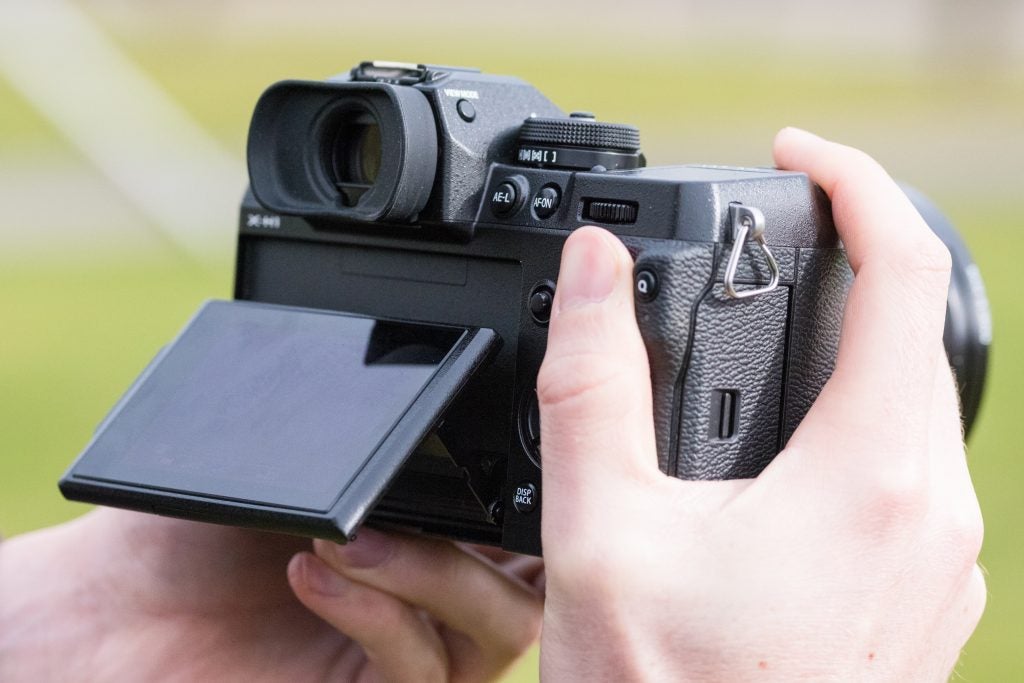
If you’re coming to the X-H1 from an existing X-series camera, you’ll feel well acquainted with the menu and operation almost straight away. If you’re coming to the X-series as a newbie, however, it will take you a little while longer to learn some of the idiosyncrasies.
Small things such as hitting the Disp/Back button so you can view the battery level as a percentage, or setting the ISO dial setting (A) to command so you can adjust ISO from your right hand using one of the command dials takes a little while to learn. The good thing about Fujifilm is that the company is great at acting on feedback from customers, which has got Fujifilm to the stage that, from a handling perspective, there isn’t really anything that irritates during day-to-day use.
The big talking point aside from IBIS is the X-H1’s size and how it compares to the X-T2. Pick it up and you’ll instantly notice that it’s chunkier around the handgrip compared to its sister model. While this might be a deal-breaker for those who want to travel as small and light as possible, it will be welcome news for folk with larger hands who felt the X-T2 didn’t provide quite enough purchase.
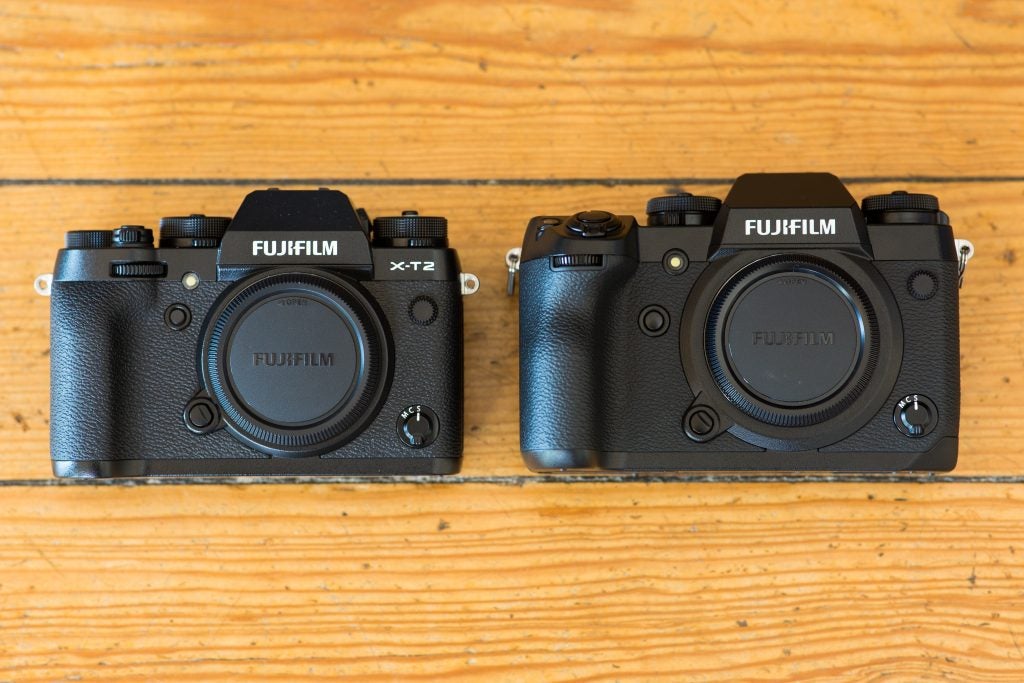
It takes a bit of time to adjust = to the X-H1’s brawnier physique after spending time with X-T2. With lenses such as the XF 200mm f/2 expected to arrive later this year, the X-H1 provides that extra bit of bulk that serious photographers need to get away from their small mirrorless camera feeling too front-heavy when it’s paired with large telephoto lenses.
During lengthy spells shooting wildlife and rugby, I found the X-H1 offers a balanced feel with the Fujinon 100-400mm f/4.5-5.6 R LM OIS WR lens than the X-T2.
Fujifilm X-H1 – Performance
Being the first X-series model with IBIS, the questions most photographers want answered are: how effective is it in use and how slow will it allow handheld images to be taken?
Before touching on the finer details, it’s important to understand how it’s activated and used. Under the camera icon in the main menu you’ll find a new sub-head for IS mode. Selecting ‘continuous’ means the IBIS system is always active when the camera is switched on. Set it to ‘shooting only’ means the IBIS system activates only after the shutter button has been half pressed.

Fujinon XF 16-55mm f/2.8 R LM WR, 1/200sec at f/5.6, ISO 200
With non-stabilised lenses you have the option to turn IBIS off from the same menu, but when you use a lens with OIS built-in, the option to turn off IBIS disappears. In this instance, image stabilisation is controlled directly from the OIS switch on the lens.
The speed at which you’re able to shoot sharp handheld images comes down to a few factors, such as how solid your handheld technique is and the focal length of the lens you use.
It’s a well-known fact that handshake is greatly accentuated with longer focal length lenses. It’s therefore important to go into handheld photography with the mindset that you’ll always be able to achieve sharper shots with slower shutter speeds using a wide lens than you will with a long telephoto.

Fujinon XF 16-55mm f/2.8 R LM WR, 1/15sec at f/2.8, ISO 800
I tested the X-H1 with a variety of wide primes, standard zooms and the longest lens currently available in the X-mount – the Fujinon XF 100-400mm f/4.5-5.6 R LM OIS WR. With the non-stabilised Fujinon XF 23mm f/1.4 R, I achieved consistently sharp handheld images at 1/2sec.
With the Fujinon XF56mm f/1.2 R attached, I was able to shoot down to 1/5sec before shake began to creep into shots. With the XF 100-400mm f/4.5-5.6 R LM OIS WR set to the farthest end of its zoom range, I walked away with a high hit rate of pin-sharp images at 1/25sec.
For anyone constantly on the move, who doesn’t have the luxury of time to setup on a tripod, the IBIS system will make a huge difference. Not only does it bring a new lease of life to previously unstabilised lenses, it allows for better creative freedom with motion whilst keeping any stationary subjects perfectly sharp.

Fujinon XF 16-55mm f/2.8 R LM WR, 1/10sec at f/2.8, ISO 1600
The X-H1’s Bluetooth connectivity is fairly easy to setup. With this done, each time the Camera Remote app is loaded the camera and mobile device automatically connect. It still requires Wi-Fi to work, but the good thing about Bluetooth is that it initiates the Wi-Fi connection faster when your device isn’t already connected to a Wi-Fi network.
The Auto Image Transfer function was effective at sending the latest batch of captured images to my smartphone – but, be warned: this can fill up storage quickly, especially if you shoot continuous bursts regularly. Being picky and manually selecting which images to send gets around the job of having to decide which shots to delete off a mobile device later.
The performance of the uprated viewfinder is sublime, providing an incredibly crisp and accurate view of the frame; colours faithfully represent what’s seen by the human eye. Shooting settings automatically rotate in the EVF based on the shooting orientation, and it’s handy having the option to swipe your finger across the surface of the screen to flick through shots in playback mode.

Fujifilm XF 100-400mm f/4.5-5.6 R LM OIS WR, 1/750sec at f/5, ISO 500
The screen does have room for improvement, though. I’d have liked it more had Fujifilm embraced the idea of double-tapping a specific area of the screen before loading a 100% magnified view of that precise part of the image. In all other respects the screen is excellent. Its manoeuvrability, especially for low-angle work in both orientations, can’t be faulted.
The X-H1’s autofocus performance continues from where the X-T2 left off. It’s spritely at acquiring focus in all its AF modes, with the added benefit of being even more responsive in low light. The X-H1’s continuous autofocus was given a real workout shooting wildlife and a rugby match, but didn’t falter. It put in an outstanding performance when continuous AF and Zone AF mode were used together.
Having so many AF points spread so widely across the frame makes it a delight to use for precise focusing on eyes or small subjects. Double-tapping the excellent AF toggle is also a useful shortcut to get the focus point back to centre in an instant.

Fujifilm XF 100-400mm f/4.5-5.6 R LM OIS WR, 1/2500sec at f/4.7, ISO 1600
The TTL 256-zone metering system is super-reliable and produces accurate exposures that rarely require more than 0.7EV to be applied. True to life colour is captured by the sensor, both in JPEG and Raw file formats set to its Standard/Provia mode. However, if you feel your shots could profit from a boost, the full suite of film simulation modes are never far away.
The white balance system can generally be relied upon to produce natural colour balance, but there’s the option to refine the WB shift, adjust the colour temperature (2500k-10,000k), as well as setup and save your own custom settings.
Related: Best DSLRs
Fujifilm X-H1 – Image quality
The X-H1 is the fifth Fujifilm X-series camera to be equipped with the 24.3-megapixel X-Trans CMOS III sensor and and X-Processor Pro. With the same sensor and processor combination as the X-Pro2, X-T2, X-T20 and X-E3, image quality is on an equal playing field with its classmates: It provides adequate resolution for most, with an impressive noise response when pushed to high sensitivities.
Putting the sensor through its paces up to its sensitivity ceiling of ISO 51,200 produced identical results to those recorded by the X-series cameras mentioned above. Noise is handled exceptionally well between ISO 100-6400, and the level of detail it manages to resolve right up to ISO 12,800 and 25,600 remains impressive for a sensor that’s more than two years old.
Resolution
The level of detail recorded by the 24-megapixel sensor doesn’t throw up any surprises. The lack of a low-pass filter contributes to it resolving a maximum of 3400l/ph between ISO 100 and ISO 400, with resolution dropping ever so slightly at ISO 800 to 3200l/ph.
The X-H1’s sensor continues to preserve a high level of detail at ISO 3200 and 6400, exceeding 3000l/ph at both these settings much like the X-T2. The detail resolved at ISO 12,800 (2800l/ph) remains high, and the sensor even manages to resolve 2400l/ph when the ISO dial is rotated to its expanded ‘H’ setting, which is equivalent to ISO 51,200.
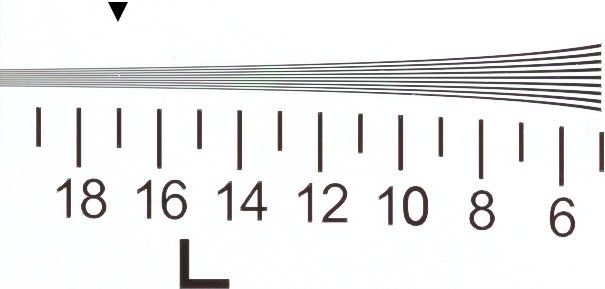
Fujifilm X-H1, Raw, ISO 100. Multiply the number below the line by 200 for the resolution in lines/picture height
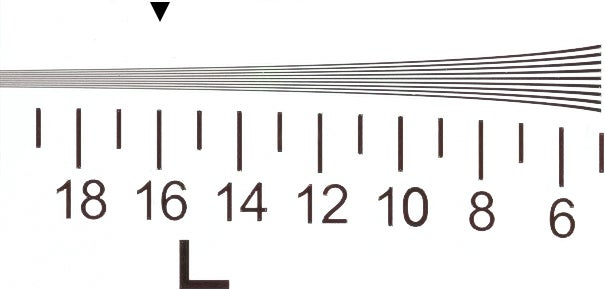
Fujifilm X-H1, Raw, ISO 800. Multiply the number below the line by 200 for the resolution in lines/picture height
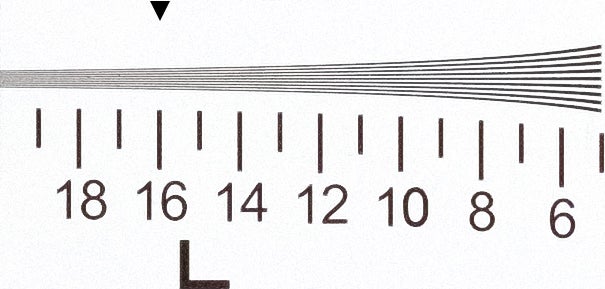
Fujifilm X-H1, Raw, ISO 6400. Multiply the number below the line by 200 for the resolution in lines/picture height
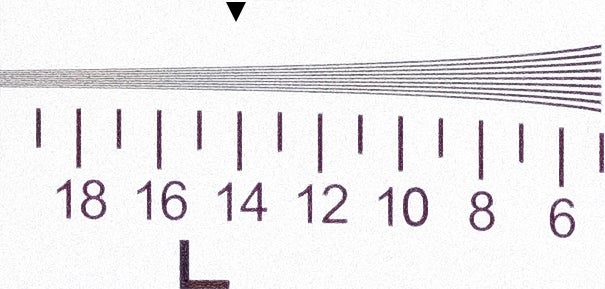
Fujifilm X-H1, Raw, ISO 25,600. Multiply the number below the line by 200 for the resolution in lines/picture height
Noise
A close study of our diorama test results tells us that the X-H1 delivers clean images, with barely a hint of luminance noise between ISO 100 and ISO 800. Push beyond ISO 800 to ISO 1600, however, and you can begin to make out luminance noise creeping in.
Luminance noise does start to become more noticeable in images captured at ISO 3200 and 6400. However, with a touch of noise reduction applied later you can produce extremely satisfying results. Users shouldn’t shy away from using ISO 3200 or ISO 6400 when these settings need to be used.
Rotating the ISO dial to ISO 12,800 introduces more luminance noise, but the level of fine detail recorded remains high. I’d consider ISO 12,800 to be the limit at which I’d be willing to push. Although ISO 25,600 can be used in urgent situations, ISO 51,200 should be avoided – there’s a big drop in saturation at this setting.
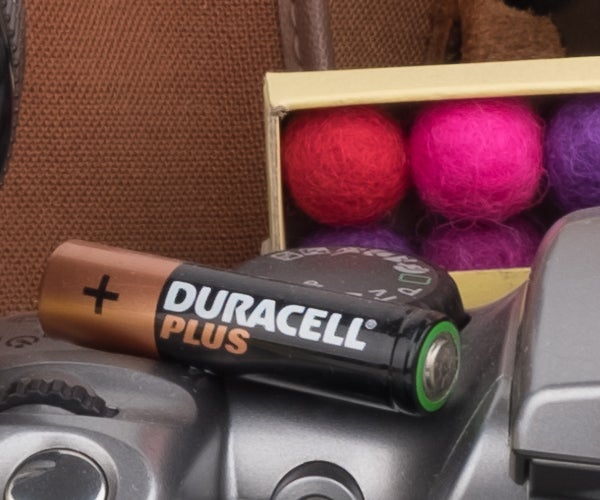
Fujifilm X-H1, Raw, ISO 100
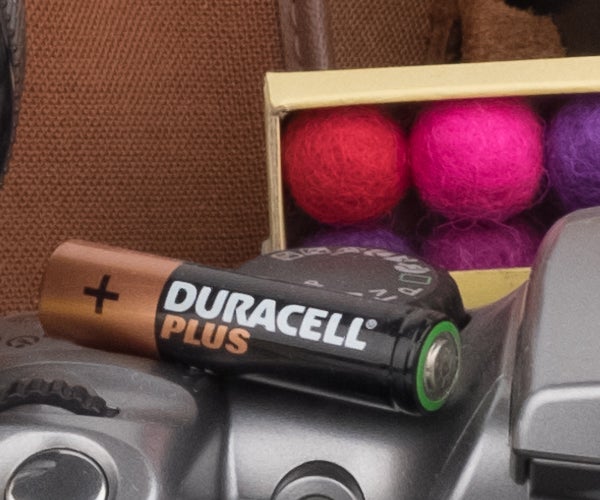
Fujifilm X-H1, Raw, ISO 800
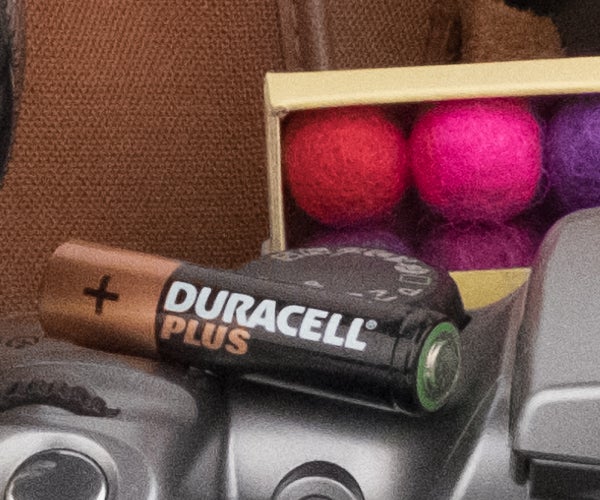
Fujifilm X-H1, Raw, ISO 6400
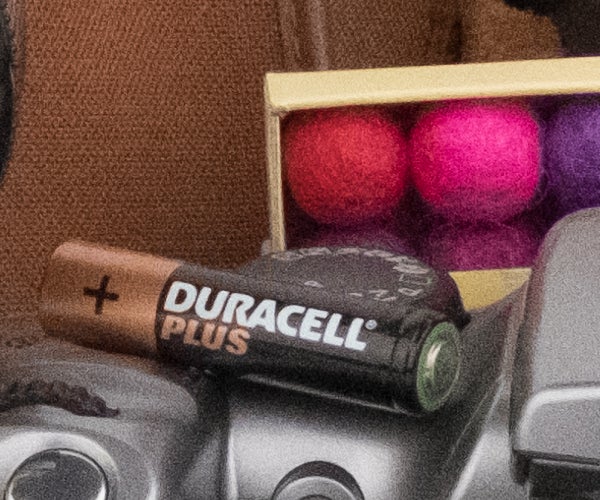
Fujifilm X-H1, Raw, ISO 12800
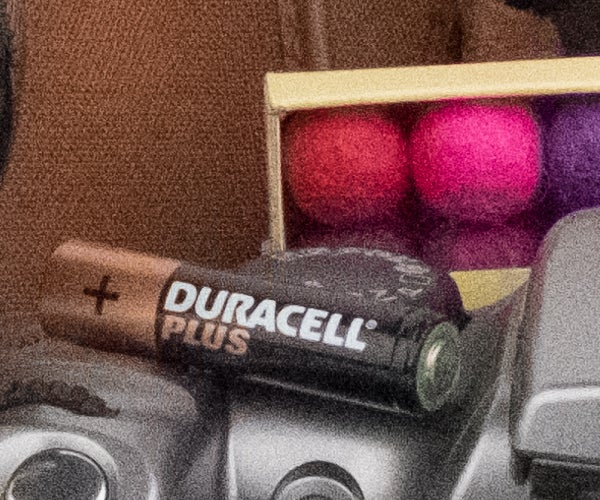
Fujifilm X-H1, Raw, ISO 25600
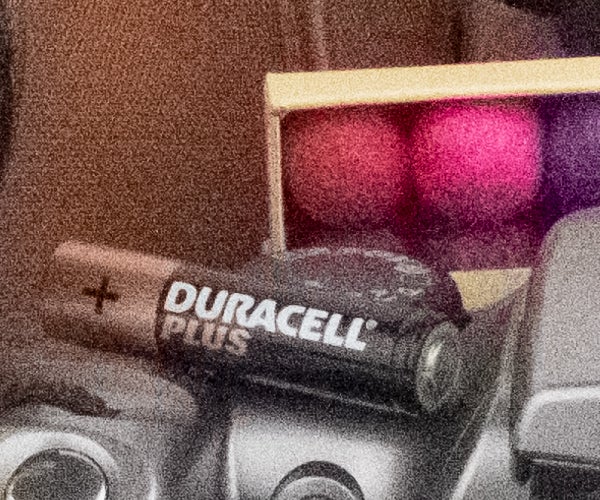
Fujifilm X-H1, Raw, ISO 51200
Why buy the Fujifilm X-H1?
The X-H1 is Fujifilm’s answer to serious photographers who want all the desirable qualities of an X-series camera in a more robust and muscular body.
The trade-off for employing the highly effective IBIS system is that the camera is physically larger. Bigger isn’t necessarily better in the world of photography, though, especially when it comes to portability. Although the X-H1 does lose some of the compact charm we’ve come to associate with the brand, Fujifilm’s engineers have made a conscious effort to ensure the X-H1 remains smaller and lighter than many of its high-end DSLR competitors.
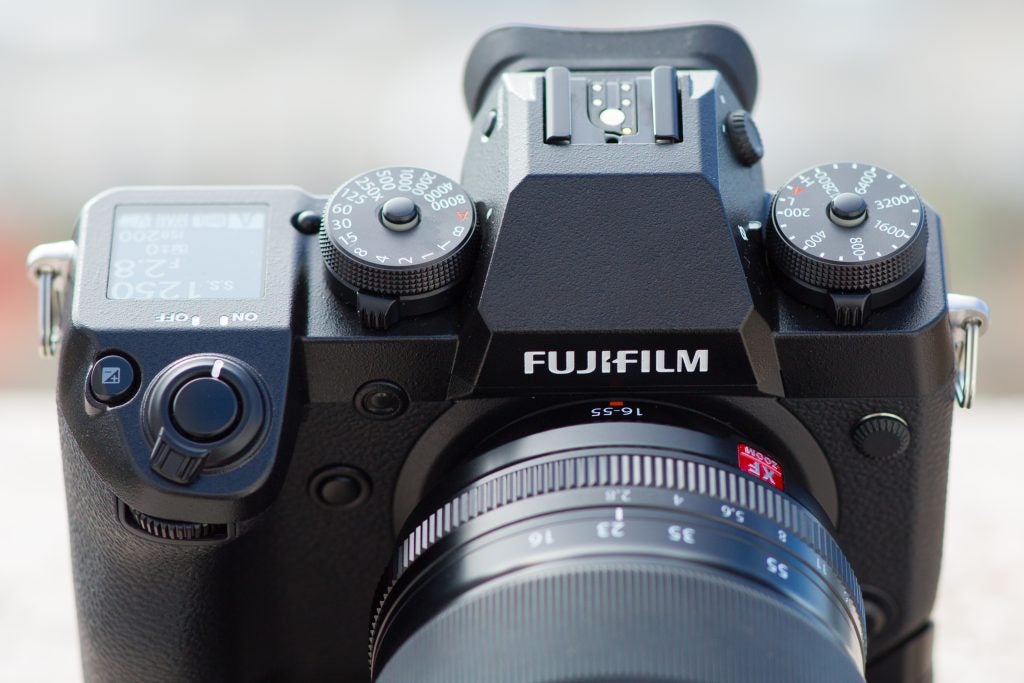
The X-H1 doesn’t have the wow factor of the X-T2 at launch, but a lot of this comes down to the fact the X-H1 inherits many of the same core features. Thankfully, the X-H1 has enough that’s new to differentiate it from the X-T2. Plus, the way it merges design elements of the GFX-50S and X-T2 into an entirely new body has been a resounding success from a handling and operational perspective.
Other advances such as the improved autofocus, uprated EVF and Bluetooth connectivity combine to make it the finest performing X-series camera that’s passed through my hands.
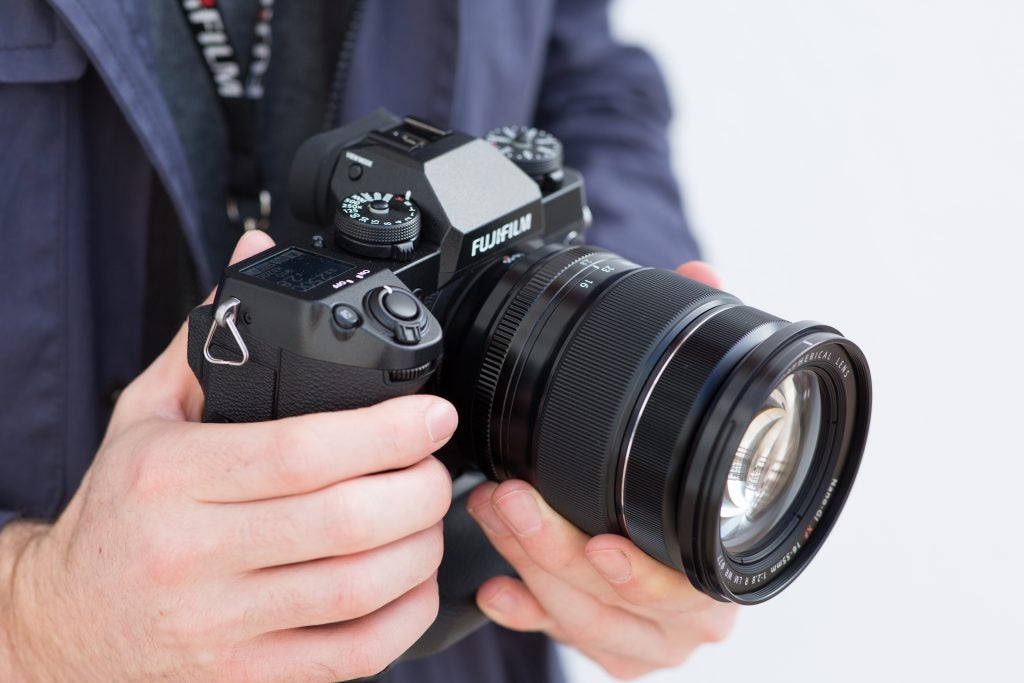
For photographers and videographers who love the flexibility that comes with shooting handheld, and those who know that IBIS will play a vital role in the images or footage they record, spending £265 extra for the X-H1 over the X-T2 is a sensible decision.
If size is your main concern then the X-T2 would be a better fit; it remains one the finest-performing all-rounders that money can buy for under £1500.
Verdict
The X-H1 is a highly impressive performer in the evolving Fujifilm X-series and is a more than capable alternative to many of today’s heavier and bulkier professional DSLRs.


